My Favorite writer is Kazi Nazrul Islam || 13/04/2021
Hey guys, Assalamu Alaikum. Hope you are well. I am also great. Today I will talk about my favourite writer. His name is Kazi Nazrul Islam. He is our national poet also. So without any further due let's start my post today.

Attribution text: Kazi Nazrul Islam by Shovy Rahman from the Noun Project Source
Kazi Nazrul Islam
Kazi Nazrul Islam (Bengali: কাজী নজরুল ইসলাম) was a Bengali author, composer, activist, and philosopher who is best known for his groundbreaking works of Bengali poetry. He lived from May 25, 1899, to August 29, 1976. Many of his works depict an intense revolt against human injustice by slavery, hate, and tradition, earning him the moniker Bidrohi Kobi — Rebel Poet. He is the official national poet of Bangladesh and is honored in India. Scholars credit him with igniting a cultural revival in Bengal's Muslim culture, "liberating" Bengali poetry and literature from its medieval constraints. Kazi Nazrul Islam helped his people form a new relationship with modern life by bridging the gap between traditional Islam and a modern sensibility.
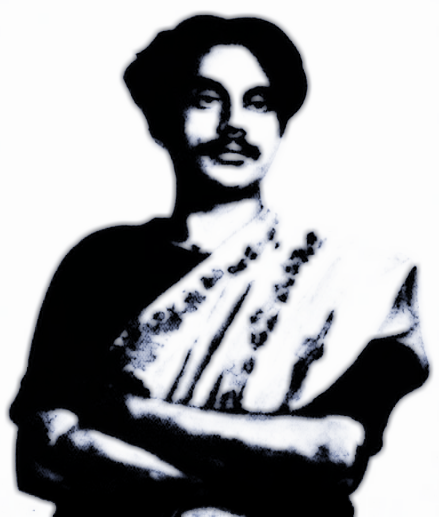
Nazrul was born into a poor Muslim family and went on to study religion and work as a muezzin at a nearby mosque. Working with theater groups taught him about music, drama, and literature. Nazrul established himself as a journalist in Kolkata after serving in the British Indian Army (then Calcutta). Through his poetic works such as "Bidrohi" ("The Rebel") and "Bhangar Gaan" ("The Song of Destruction"), as well as his publication "Dhumketu," he attacked the British Raj and preached revolution ("The Comet"). Nazrul wrote the "Rajbandir Jabanbandi" ("Deposition of a Political Prisoner") while in jail, sharpening his anti-imperialist stance. Nazrul denounced Muslim religious fundamentalism and looked into the lives of India's poor. He continued to be involved in political organizations, as well as literary, craft, and music societies.
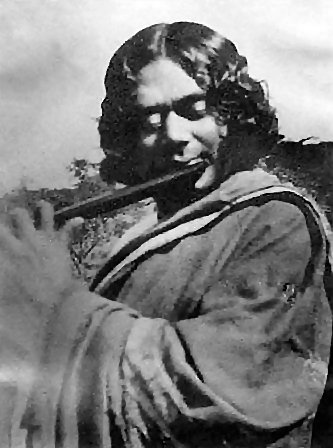
Love, democracy, and revolution are among the themes explored in Nazrul's writings; he rejected all forms of bigotry, including religious and gender bigotry. His fervent patriotism in the face of British oppression landed him in prison many times. He wrote short stories, novels, and essays, but his poems, in which he invented new forms such as Bengali ghazals, are his most well-known works. Nazrul composed and wrote the music for nearly 3000 songs, collectively known as Nazrul Sangeet (Nazrul songs) and still popular today.
He started to show symptoms of an unknown illness at the age of 43 (in 1942), losing his speech and memory. Nazrul, who was diagnosed with Pick's Disease[1] by Dr. Hans Hoff in Vienna, eventually succumbed to an incurable mental illness that forced him to live in isolation for several years. Nazrul and his family were invited by the Bangladeshi government to move to Dhaka in 1972, where he died four years later.
Kazi Nazrul Islam was born in the Burdwan District of Bengal, in the village of Churulia (now located in the Indian state of West Bengal). Nazrul's father, Kazi Fakir Ahmed, was the imam and caretaker of the local mosque and mausoleum. He had three sons and a daughter. Zaheda Khatun was Nazrul's mother. Kazi Shahebjan and Kazi Ali Hussain were Nazrul's brothers, and Umme Kulsum was his sister. Nazrul was given the nickname Dukhu Mia ("Sad Man") when he started attending the maktab, the mosque's nearby religious school, where he learned the Qur'an and other scriptures, as well as Islamic philosophy and theology. When his father died in 1908, his family was devastated. Nazrul started working as a caretaker in his father's place at the age of ten to help support his family, as well as assisting teachers in school. He later became the mosque's muezzin, leading the congregation in prayer.
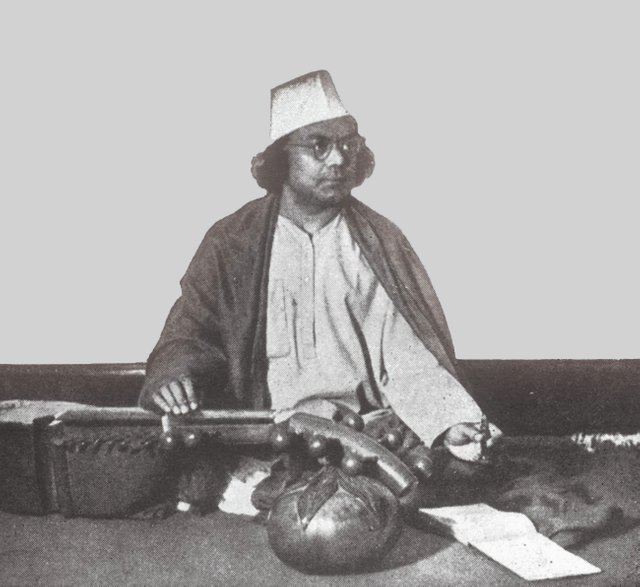
Nazrul was drawn to folk theater and joined his uncle Bazle Karim's leto (traveling theatrical group). Working and traveling with them, as well as learning to act and write songs and poems for the plays and musicals. Nazrul started studying Bengali and Sanskrit literature, as well as Hindu scriptures such as the Puranas, as a result of his work and experiences. Chasar San, Shakunibadh, Raja Yudhisthirer San, Data Karna, Akbar Badshah, Kavi Kalidas, Vidyabhutum, Rajputrer San, Buda Saliker Ghade Ron, and Meghnad Badh were among the folk plays written by the young poet for his group.
Nazrul left the troupe in 1910, enrolling in the Raniganj Searsole Raj School, then transferring to the Mathrun High English School, where he studied under Kumudranjan Mallik, the headmaster and poet. Since he couldn't afford to pay his school fees any longer, Nazrul dropped out and joined a gang of "kaviyals." He later worked as a cook in the home of a Christian railway guard, as well as at a bakery and tea stall in Asansol. Nazrul enrolled at the Darirampur School in Trishal, Mymensingh District, in 1914. Nazrul studied Bengali, Sanskrit, Arabic, Persian literature, and classical music, among other topics, under teachers who admired his commitment and talent.
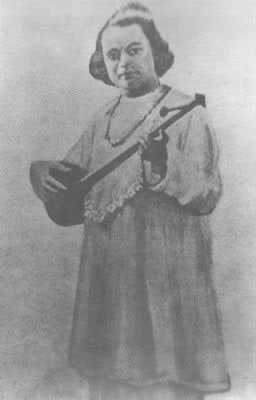
Rebel poet
In 1920, Nazrul left the army and settled in Kolkata, India's cultural capital at the time (it had ceased to be the political capital in 1911). He became a member of the "Bangiya Mussalman Sahitya Samiti" ("Bengali Muslim Literary Society") and shared a room with colleagues at 32 College Street. His first book, Bandhan-hara (Freedom from Bondage), was published in 1920, and he continued to work on it for the next seven years. (5) "Bodhan," "Shat-il-Arab," "Kheya-parer Tarani," and "Badal Prater Sharab" were among the poems in his first book. Both works were well-received by critics, offering the young poet his first taste of celebrity.
Nazrul met a new generation of Muslim writers while working at the literary society, including Mohammad Mozammel Haq, Afzalul Haq, Kazi Abdul Wadud, and Muhammad Shahidullah. He frequented clubs like the Gajendar Adda and the Bharatiya Adda, which catered to Calcutta's artists, poets, and intellectuals. Nazrul went to Santiniketan with Muhammad Shahidullah in October 1921 and met Rabindranath Tagore. Despite their many disagreements, Nazrul saw Tagore as a mentor, and the two maintained a close relationship.
In Daulatpur, Comilla District, in 1921, Nazrul was engaged to be married to Nargis, the niece of a well-known Muslim publisher Ali Akbar Khan. However, on the day of the wedding, June 18, 1921, the arrangements fell through. Nazrul walked out of the wedding ceremony after Ali Akbar Khan publicly demanded that the terms of the marriage contract be changed to include a condition that Nazrul lives in Daulatpur after the wedding.
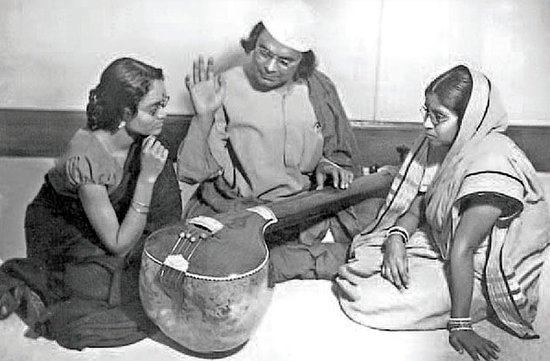
Later life and illness
In 1933, Nazrul published "Modern World Literature," a series of essays in which he examined various literary styles and themes. Nazrul described two major literary trends: the first shows ardent commitment to Earth through discovery of human habitats, and the second tries to climb above and out of Earth to explore and enter the heavens. He released ten volumes of songs between 1928 and 1935, totaling over 800 songs, with over 600 of them focused on classical ragas. Almost 100 of the songs were folk tunes based on kirtans, with another 30 being patriotic songs. Nazrul wrote over 2600 songs between his return to Kolkata and his death in 1941, many of which have been lost. His songs, which are based on baul, jhumur, Santhali folksongs, jhanpan or snake charmer folk songs, bhatiali, and bhaoaia, have folk-song tunes on one side and sophisticated lyric with poetic beauty on the other. He also wrote poems, songs, and stories for children, hoping to arouse curiosity, a sense of independence, and critical thought.
Pramila, his wife, died on June 30, 1962. Nazrul remained in critical condition. In 1972, Bangladesh's newly independent government received permission from India's government to bring Nazrul to Dhaka and grant him honorary citizenship. Nazrul's physical and mental health did not improve despite obtaining medication and attention. His youngest sibling, Kazi Aniruddha, an accomplished guitarist, died in 1974, and Nazrul succumbed to his long-term illnesses on August 29, 1976. He was buried beside a mosque on the University of Dhaka campus, in line with a wish he expressed in one of his poems. His funeral was attended by tens of thousands of people. Two days of national mourning were held in Bangladesh, and the Indian Parliament observed a minute of silence in his honor. Sabhyasachi, his last surviving son, died in 1979.
Note: All the image I used in this post is taken from google under Creative Commons licenses. So there is no copyright issue.
Thanks for the qualityful post
Thanks vai...
Good post .